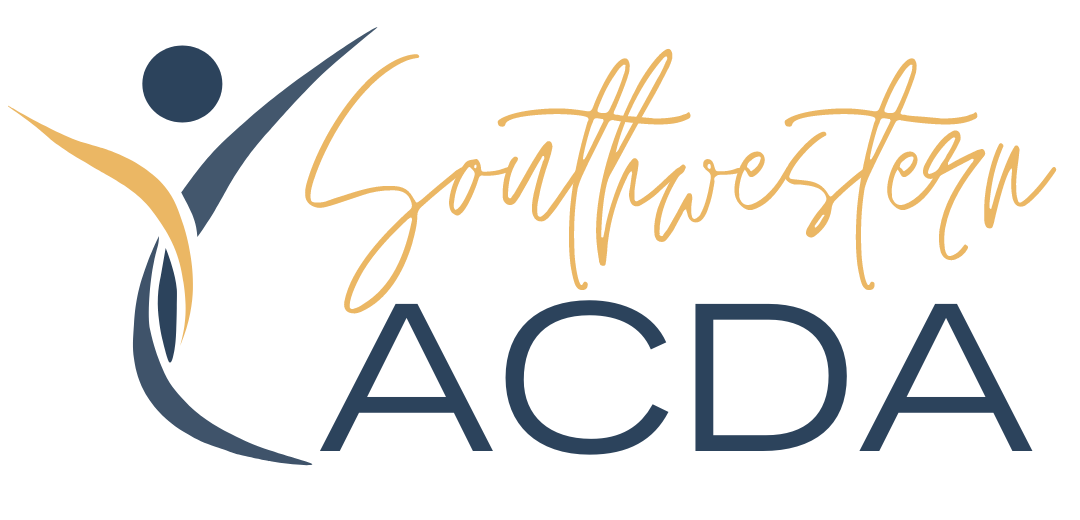SWACDA Jazz Choir R&R Chair
Beth Enloe-Fritz
What would be in a great audition for an Honors Vocal Jazz Ensemble? Beth Enloe Fritz – Jazz R&R – With contributions from Ben Silvermintz (MO ASVJE coordinator) and John Stafford (National ACDA Jazz R&R and VJE coordinator) As you approach honor jazz ensemble auditions with your students, here are a few things that, with practice and confidence, will present a great audition.
1. It’s an obvious (but most important) point that reliable students with a positive attitude and a strong work ethic are most desired in this small setting. Divas and insecure personalities will cause the short-lived group to fracture. Although this might not be stated plainly on an audition form, it can make a big difference in an honors group with 16 or so singers on their own mic. This is the educator’s call before having their student send in an audition.
2. Show off solid basic vocal technique. This list is a great start and the basis for any desired sound.
intonation, intonation, intonation
breath support
correct melodic notes and rhythms as a guide
musical effect (dynamics, phrasing, text weight, etc.)
if range is to be demonstrated, show the NICEST highest and lowest pitch, not what they can screech or air out
3. Demonstrate a confident jazz style.
TONE: Jazz generally uses a relaxed jaw (think of smiling). There should be space in the back of the mouth with a forward placement (between classical and Broadway). Up tunes will have a higher tone-to-air ratio (90:10), and ballads will have a lower air ratio (75:25).
Have a blendable natural tone. If a student has an affected or forced tone, it will not be pleasant when it is amplified by a mic.
Typically, jazz sopranos have clear, floaty, and bright tessituras (bel canto). They are the “style leaders” or first trumpets of the group.
For tenors and basses, lightening up in their upper range is always best.
For altos, tenors and basses, moving into a lower register should not govern the heaviness of tone.
VIBRATO: Only used as ornamentation in jazz or to give motion to a note or phrase. It is controlled and used on purpose. In general, after locking a chord, vibrato comes in right before a cutoff.
DICTION: Text should be conversational. We use stop consonants in jazz. (For word-ending plosives, the tongue comes to the roof of the mouth to stop the sound.) Hard ending consonants are only used for a particular reason like text painting or accentuating rhythms, otherwise it increases the groups’ “square quotient.”
4. Jazz chart minus one.
When the auditioner is performing their part of a previously chosen jazz chart, first consider #2 and #3 above, then they should focus on sounding like a part of the ensemble in the recording. Blending and balancing to the other ensemble parts in this case will be a clue to the adjudicator how they will incorporate into the tone and style of the amplified live ensemble.
The auditioner should demonstrate a highlighted melody when it’s in their part and support the melody when it’s not.
Make sure bass singers can easily sing in their upper range and, most importantly, can hold any pitch other than the root of the chord.
5. Solo Jazz Standard (if the tune is not already provided)
It is difficult to judge an appropriate jazz style if the student is singing a pop or Broadway tune.
If accompanied, it is difficult to judge appropriate jazz style if the student is singing a jazz standard with a pop accompaniment. They tend to match the style in which they are accompanied. Here are some options for an accompaniment to enhance jazz style in the recording:
Try using Smartmusic or IReal-pro. You can change the key and/or tempo, cut measures and add loop(s) for a repeat. Then, record and save it as a sound file.
Of course, live piano accompaniment from a jazz chart.
Other jazz-style accompaniment tracks like YouTube, etc.
6. Improvise (many times on 12-bar blues)
It is usually not a make-or-break thing. However, it raises your chances respectively. Honors jazz ensembles will have clinicians expecting the musicians to be fearless and ready to improvise.
Do not have an auditioner sing a cappella. An adjudicator wants to hear the singer following the played chord changes.
When in doubt, singers should stick with doo-ba (soft consonants) or other simple syllable combinations.
Improvisation shows off great intonation.
It doesn’t have to be complicated or full of notes to show competency. Think more of question and answer, with space, long tones, repetition, or sequencing of ideas.
It doesn’t have to be what might be considered “perfect.” A good improviser makes the “mistakes” work for them. Just go for it. Encourage them to open the door to creativity.
7. Work on the ear for preparation: Even though specific chromatic, non-diatonic, or extended chord exercises may not be used in the audition, practicing them will only help with everything else.
Chromaticism is essential. Warming-up on the blues scale and the chromatic scale helps.
Use melodic exercises that have jumps of tri-tones and other unusual intervals.
Use harmonic exercises where students have to sustain their pitch in dissonant extended chords with tri tones or tone clusters (having the bass avoid the root).
8. Listening always helps everything.
For great examples of jazz solo/improvisation singing, I would suggest listening to: Ella Fitzgerald, Mel Torme, Chet Baker, Darmon Meader, Esperanza Spaulding, Diana Krall, Rosana Eckert, Elaina Elias, and Kurt Elling.
